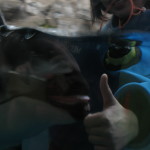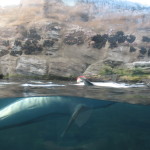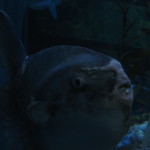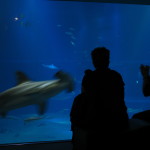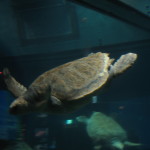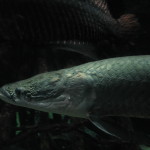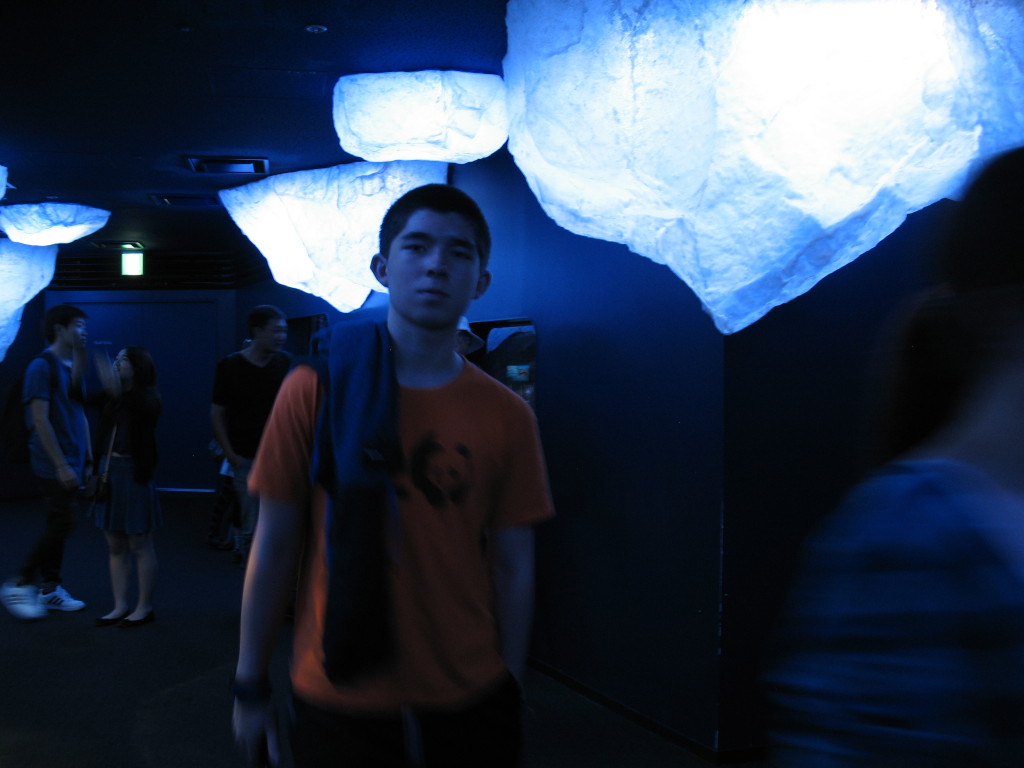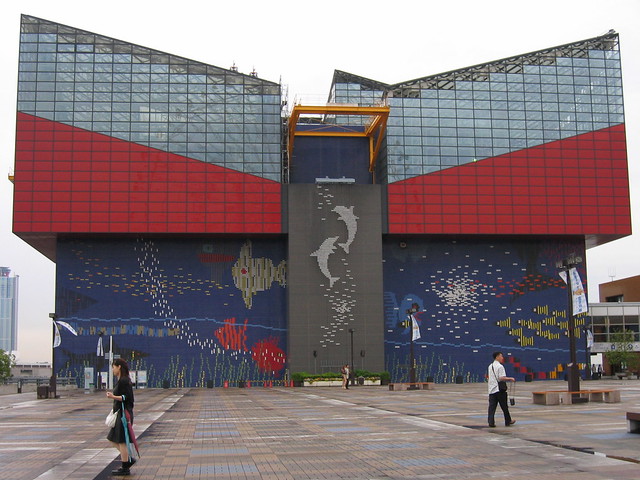
Photo by Kara Brugman.
This is the most serious aquarium I have ever seen. It’s situated right on the port of Osaka, which seems appropriate. Nearby is the most serious ferris wheel I have ever seen. We contemplated going for a spin in it, but we decided otherwise. I learned that the aquarium contained 1.5 times the world’s annual output of acrylic. That’s crazy!
Anyhow, visitors enter the museum by going to the top floor (I think the seventh) and winding down. Many of the tanks span multiple stories, so it’s interesting to see the marine life that likes to hango out on the surface and then see some other bottom-dwellers later. They have the proverbial tunnel tank that visitors walk through; a tank in the center called the Pacific Ocean tank, which contains two whale sharks, a bunch of stingrays, a hammerhead shark, and some mid-size and small-ish sharks; another central tank with two enormous sea turtles who seemed to always be on opposite sides of the tank from each other; a deep but narrow tank with only two sunfish and kelp, plus some netting to keep the sunfish away from the walls of the tank – they seemed to always want to bump into said walls. Also, the tanks on the perimeter are themed to span the regions along the pacific rim. They had more non-marine animals than I expected, including a giant iguana, a capybara (the largest species of rodent), and some type of monkey. Also, they had the standard cute sea mammals: a few dolphins, otters, seals, and sea lions. There was an Antarctic section with at least three species of penguins.
- a dolphin waves goodbye on the trainer’s queue
- one of the two sunfish who like to butt into the walls
- This red-tailed koi was about as long as I am tall.
I forget what these guys were called, but there was a school of them that just stayed still in the same corner the entire time I was there. It was very fish-like.
I thought the anchovies and sardines were the most impressive. Seeing that ginormous school swim around in a shimmering mass is quite dazzling. I think I read somewhere earlier that it’s a defense mechanism. I saw a couple of dead anchovies on the rocks though, which was sad. I guess their defense mechanisms don’t do much to defend against overcrowded tanks. All of the tanks there seemed seriously overcrowded, unfortunately. I’m not sure whether it’s intentional or the fish just keep reproducing faster than the aquarium can get rid of them or feed them to the sea mammals or the like.
I thought it was over once we got to the ground floor, but the exhibit continued underground with an assortment of sea jellies, a bunch of backlit fake ice, and a tank with a couple of seals (I think they were harbor seals) above which had a dome that arced down through the ceiling.
I was hoping to see some bioluminescent deep sea fish, but there were none. Maybe the ambient light required to prevent people from crashing into each other in the aquarium would be too much for those sorts of fish. The only real oversight otherwise was that there were no guppies, but given their habits of rapid reproduction, I am sure they would quickly exacerbate the problem of overcrowded tanks as aforementioned.
One of the seals was sitting on the ice right next to a ledge that people could look over on the ground floor. He/she locked eyes with me for a while. I’m not sure what to make of it. My best guess was either that I should back off and get out of his/her space or that I should facilitate an escape. I did the former. He/she was still looking at me with big puppy dog-like seal eyes from afar.
The aquarium had a decent amount of environmental education about it – there was an exhibit of the sort off to the side and some posters elsewhere about overfishing. The best example of this sort of education I had seen was at the Monterey Bay Aquarium a while back – they gave visitors pocket guides about what sorts of threatened fish species one should avoid eating.
